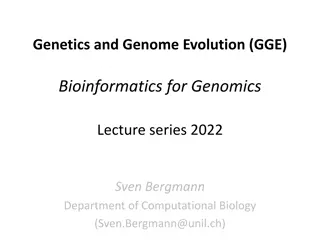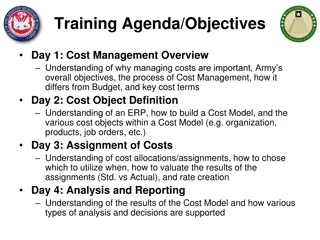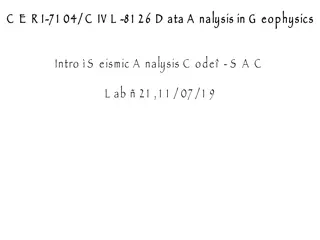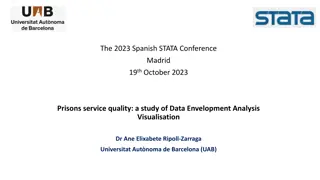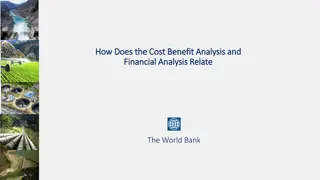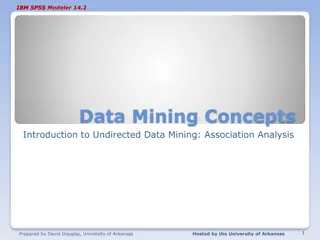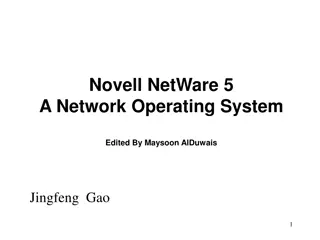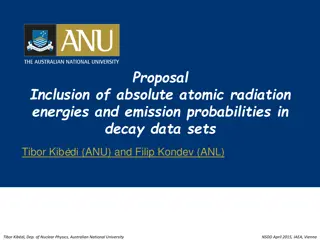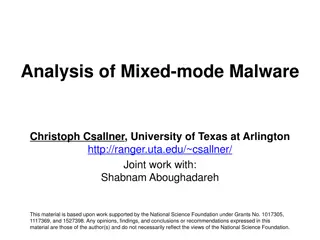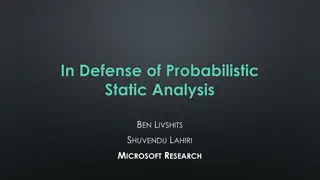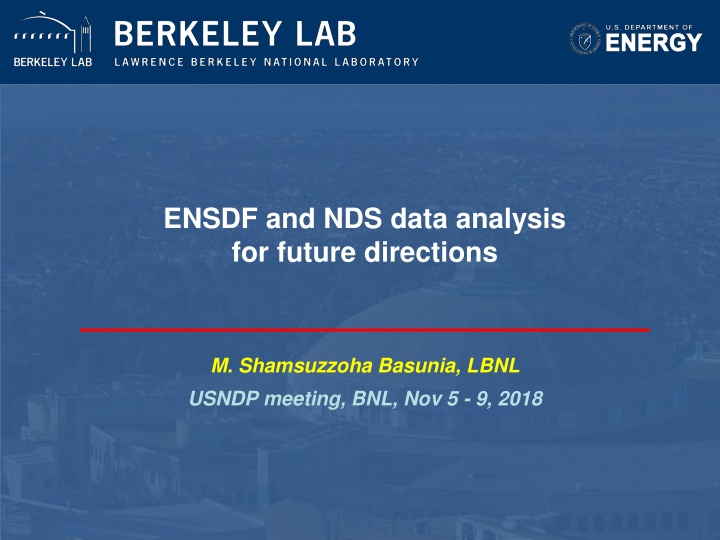
Future Trends in Nuclear Data Analysis Revealed
Explore the observations, trends, and key insights from ENSDF and NDS data analysis for future directions based on the evolving mass chain evaluations, documentations, and productivity consistency. Gain valuable insights into the growth of data size, publication trends, and record predictions since 1980.
Download Presentation

Please find below an Image/Link to download the presentation.
The content on the website is provided AS IS for your information and personal use only. It may not be sold, licensed, or shared on other websites without obtaining consent from the author. If you encounter any issues during the download, it is possible that the publisher has removed the file from their server.
You are allowed to download the files provided on this website for personal or commercial use, subject to the condition that they are used lawfully. All files are the property of their respective owners.
The content on the website is provided AS IS for your information and personal use only. It may not be sold, licensed, or shared on other websites without obtaining consent from the author.
E N D
Presentation Transcript
ENSDF and NDS data analysis for future directions M. Shamsuzzoha Basunia, LBNL USNDP meeting, BNL, Nov 5 - 9, 2018
Outline Observations ENSDF file size and trend Nuclear Data Sheets publications Mass chain evaluation Update: Mass chain and Nuclide Other indicators: Total # of XUNDL datasets since cut-off date Average age of a mass chain Frequency of mass chain evaluation/update Conclusions 2
Observations Bigger mass chain Revision adds small fraction (~25%) Repeating through same old data (~75%) Documentation for no changes Time investment: Evaluators and reviewers Review process getting slower Mass chain size, takes time to finish and review Delay - submission to publication Indc-nds-0250, p9 (1990 NSDD) 3
ENSDF size (in Megabyte) Year vs. ENSDF size (MB) 250 200 150 Megabyte 100 Average increase rate : 5.2 Megabyte/year 50 0 2000 2002 2004 2006 2008 2010 Year 2012 2014 2016 2018 2020 ~76 MB in 1990 to 222 MB in 2018, about 3 times higher For # of records: Total byte/80 bytes (lower limit) 4
ENSDF size (in Megabyte) FY vs. ENSDF size increase 9.0 8.0 7.0 6.0 Megabyte 5.0 4.0 3.0 2.0 1.0 0.0 FIscal Year Average increase rate (5.2 MB/year) shows consistency in productivity. FY 05, 17, and 18 show lower size increase than average rate 5
ENSDF facts: In 2018: Average # of records in a mass chain: 12,000 Ranging from ~ 1000 to 25,500 In 1990: (factor of ~3 lower than 2018) Predicts average # of records: ~4,000 Ranging from ~330 to ~8,500 In 1980: (factor of ~9 lower than 2018) Predicts average # of records: ~1,300 Ranging from ~110 to ~2,800 Ave. # of records ~1300 in 1980 to ~4000 in 1990, about 3 times higher Indc-nds-0250, p15 (1990 NSDD) 6
Nuclear Data Sheets publications: Year vs. NDS publications 40 Nuclide update 35 Mass chain update 30 Mass chain 25 Number 20 15 10 5 0 Year Total: 1041 NDS publications: 874 (full mass chain), 22 (multiple chains), 113 (mass chain update), and 32 (nuclide update) 7
Update mode publications: NSDD 1988 - INDC-NDS 0206, p93 8
XUNDL datasets and average age: Index of ENSDF and # XUNDL since cut-off http://www.nndc.bnl.gov/ensdf/ensdf/ensdfindices.jsp Total XUNDL datasets since cut-off 5300 5200 5184 5100 5000 4900 Number 4800 4700 4615 4600 4500 4430 4400 4300 31-Dec 19-Feb 10-Apr 30-May 19-Jul 7-Sep 27-Oct Month (2017 and 2018) Average age of mass chain: 6.9 years in 2004 and 8.3 years in 2015 9
Frequency: Mass chain vs. revision # (since 1962) 9 8 7 6 Revision # 5 4 3 2 1 0 100 105 110 115 120 125 130 135 Mass chain 140 145 150 155 160 165 170 175 180 185 190 195 200 205 210 215 220 225 230 235 240 245 45 50 55 60 65 70 75 80 85 90 95 10
Conclusions: Average increase rate (~5.2 MB/year) shows nearly consistent ENSDF productivity since 2002 FY05, FY16, and FY17 increase rates are lower Size of average mass chain: Current size ~3 times bigger compared to those in 1990 (estimated) Needs new estimate for # of mass-chain/FTE Increasing trend of XUNDL datasets since cut-off date Current ENSDF commitment lower or stable? Deal with new data and datasets only Update mode or Other new approach Use valuable time to incorporate new data quickly and improve ENSDF currency 11




